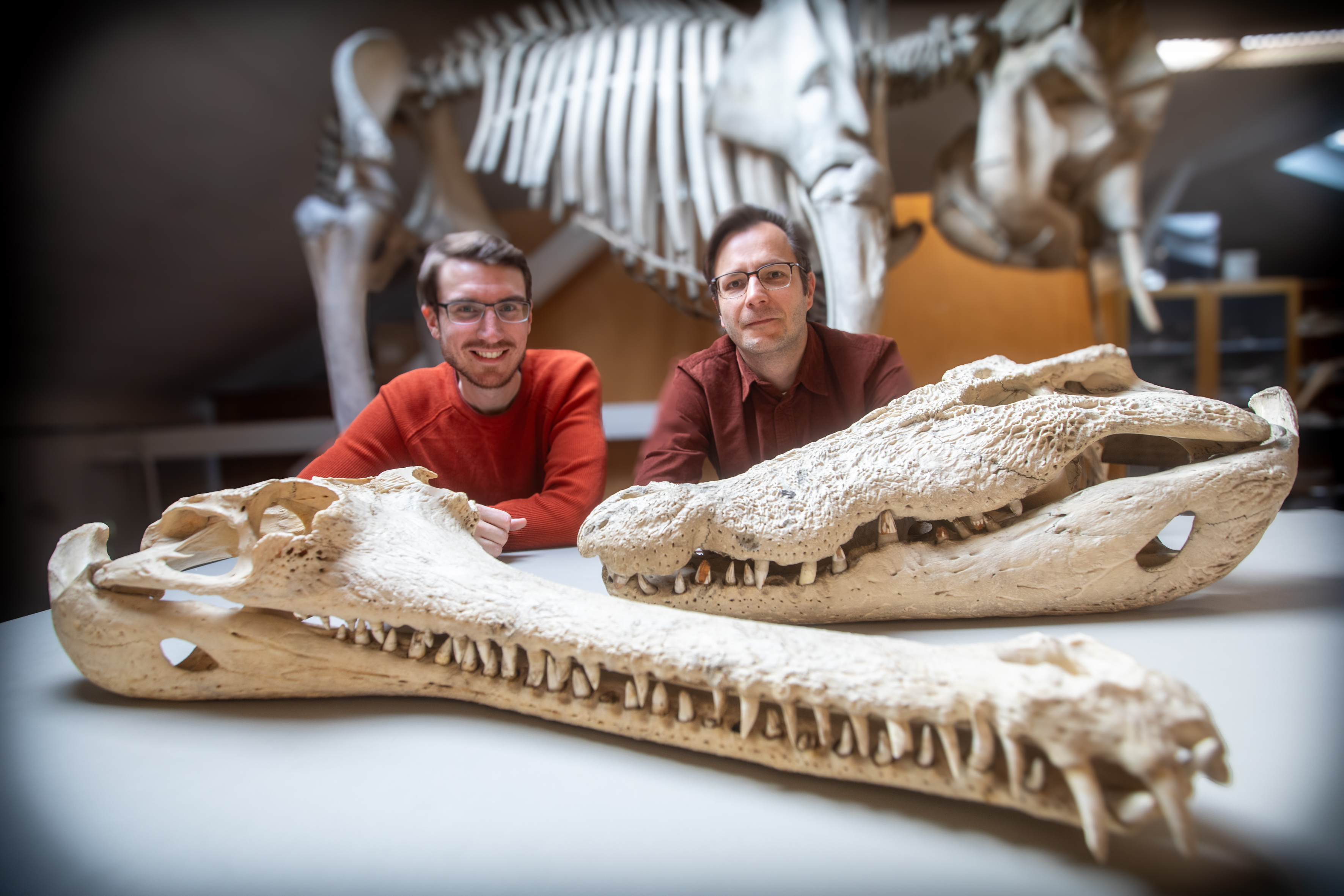The giant crocodiles that fed on large dinosaurs that strayed into Cretaceous wetlands were not closely related to modern alligators, as previously thought. In fact, they’re fairly distant from all surviving crocodilians. The discovery shows that the giant croc niche is one that has been filled multiple times in Earth’s history, with distantly related species evolving into it whenever the ecosystem was productive enough to support them.
In late Cretaceous North America, even giant beasts were seldom safe. Escaping Tyrannosaurs was a minor comfort if you got too close to the water, where Deinosochus dwelled. Its name means “terrible crocodile”, which was true from the perspective of potential prey. However, Deinosuchus fans could easily respond that at nearly 8 meters (26 feet) long, these beasts were awesome at being crocodiles, with teeth the size of bananas.
A team led by Dr Marton Rabi of the University of Tübingen created a crocodilian family tree comparing the DNA of the two dozen living crocodiles, alligators, and caimans, and 219 features of fossils from approximately 100 extinct species.
Many giant crocodilian species are known, including the giant South American caiman Purussaurus and Sarcosuchus, which lived in South America and Africa in the Early Cretaceous when the two were connected, as well as Deinosuchus. However, the authors concluded these were not closely related to each other. Instead, crocodilians independently evolved to at least 7 meters (23 feet) long on 12 known occasions. One occurred in East Africa 2 million years ago and almost certainly snacked on our ancestors. There are even reports of crocodiles close to this size from the 19th century. “The only reasons why there may not be any living, truly gigantic crocodiles left are overhunting and habitat destruction,” Rabi said in a statement.
“It almost looks like it’s the norm to have giant crocs at a given time,” Rabi told Science. “Giant crocs are not something special.” Tell that to anyone operating tourist cruises through croc territory.
Then again, the authors also make the case that Deinosuchus wasn’t quite as enormous as had previously been thought. They estimate some specimens as 7.7 meters (25 feet). Previous work had placed the same fossils at up to 12 meters (40 feet), but Rabi and co-authors think the relatively long snout deceived those making the calculations.
However, the authors acknowledge some quite partial specimens hint that larger Deinosuchus existed. For comparison, Brutus the famous shark-eating crocodile, is less than 6 meters (20 feet), although some claim his great rival, Dominator, has topped that figure.

Dr Márton Rabi (r) and Dr Tobias Massonne (l) with two of the largest skulls of living crocodilian species.
Image Credit: Friedhelm Albrecht/Universität Tübingen
Despite the size demotion, the authors think Deinocuchus was capable of consuming large dinosaurs, and wasn’t afraid to tackle a rival apex predator. “Deinosuchus crocodiles preyed on dinosaurs – that has been deduced from bite marks found even on the bones of early relatives of T. rex,” Rabi said.
The authors conclude that Deinosuchus branched off the crocodilian tree relatively early, rather than having close kinship to any survivors. It was probably saltwater tolerant, they argue, like some modern crocodiles, but unlike modern alligators, which had been thought to be its closest surviving relatives. This would explain how different Deinosuchus species existed on either side of the giant seaway that bisected North America in the Cretaceous. They propose that the first crocodilians were saltwater tolerant, with the freshwater-only adaptation of alligators hindering their prospects of matching the size of the crocs of yore.
The study is open access in Communications Biology.
Source Link: Supersized Dinosaur-Eating Crocodiles Kept Re-evolving Each Time They Had A Chance